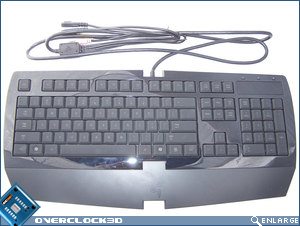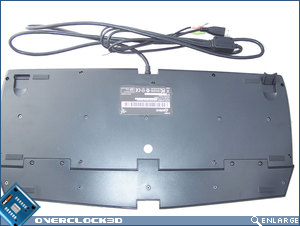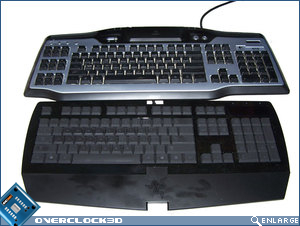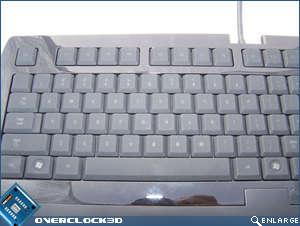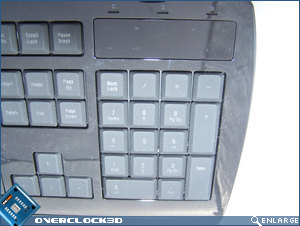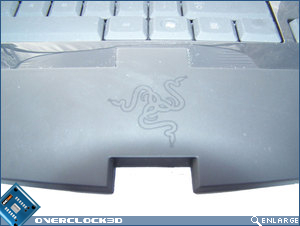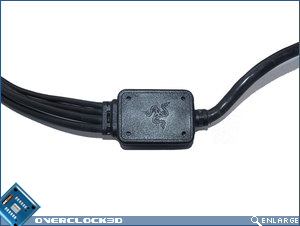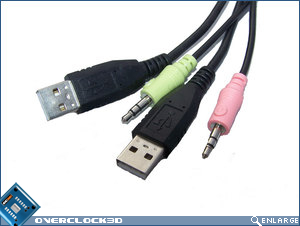RAZER Lycosa Gaming Keyboard
A Closer Look
Â
First impressions are usually lasting ones, and subsequently I’m happy to report that the RAZER Lycosa is both incredibly sleek and visually attractive. However, the black shiny plastic that has been used on the Lycosa absolutely loves fingerprints and attracts dust like nobody’s business.
Â
Â
The rear of the keyboard features small rubber feet to ensure an effective grip on a majority of desktop surfaces, and the inclusion of retractable feet should you wish to operate the keyboard in the elevated position. The RAZER lycosa also allows for the wrist rest to be removed courtesy of four small screws on the underside. While removal of it is a little more time consuming, it does make for a considerably more secure fastening system than my Logitech G15
Â
The RAZER Lycosa uses an 104-key QWERTY based layout, and the keys themselves are very similar to laptop ones with rubberised protectors over the top. The keys are very low profile, especially when compared to a G15 keyboard.
Â
Â
The Lycosa also features an onboard touch panel (driver dependent) that can be used to control the keyboard backlight; audio player controls, gaming profiles and macros.
Â
Â
The RAZER Lycosa features an inbuilt single USB hub and sockets for both a microhone and Line-in cable. The RAZER Piranha headphones would do well here.
Â
Â
At the end of the RAZER Lycosa’ cable there are two USB plugs and the obligatory Line-in and microphone jacks. One USB plug provides power for the keyboard and the other provides power for the USB hub built into the Lycosa chassis.
Â
Let’s head over the page to see how easily the RAZER Lycosa is to install and what software RAZER has included…
Â



